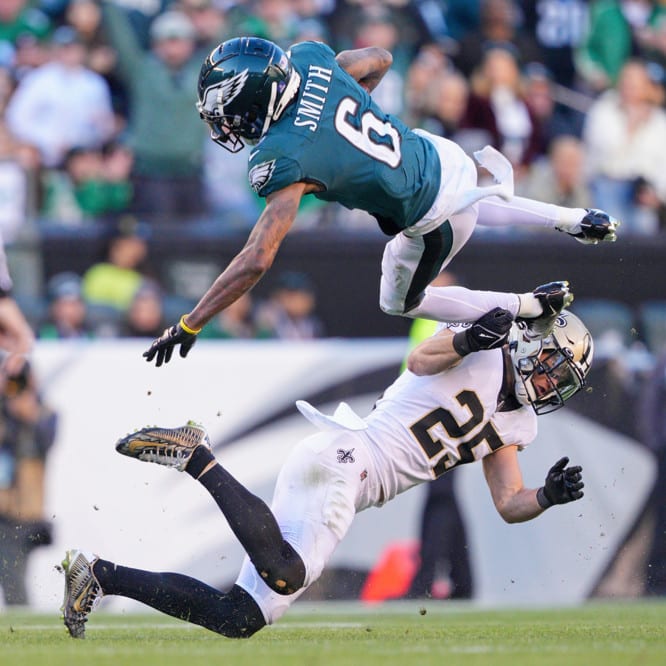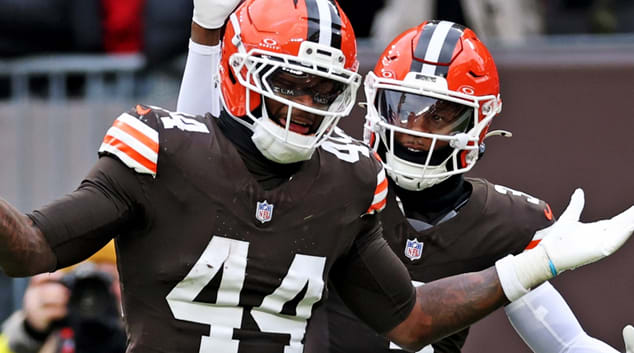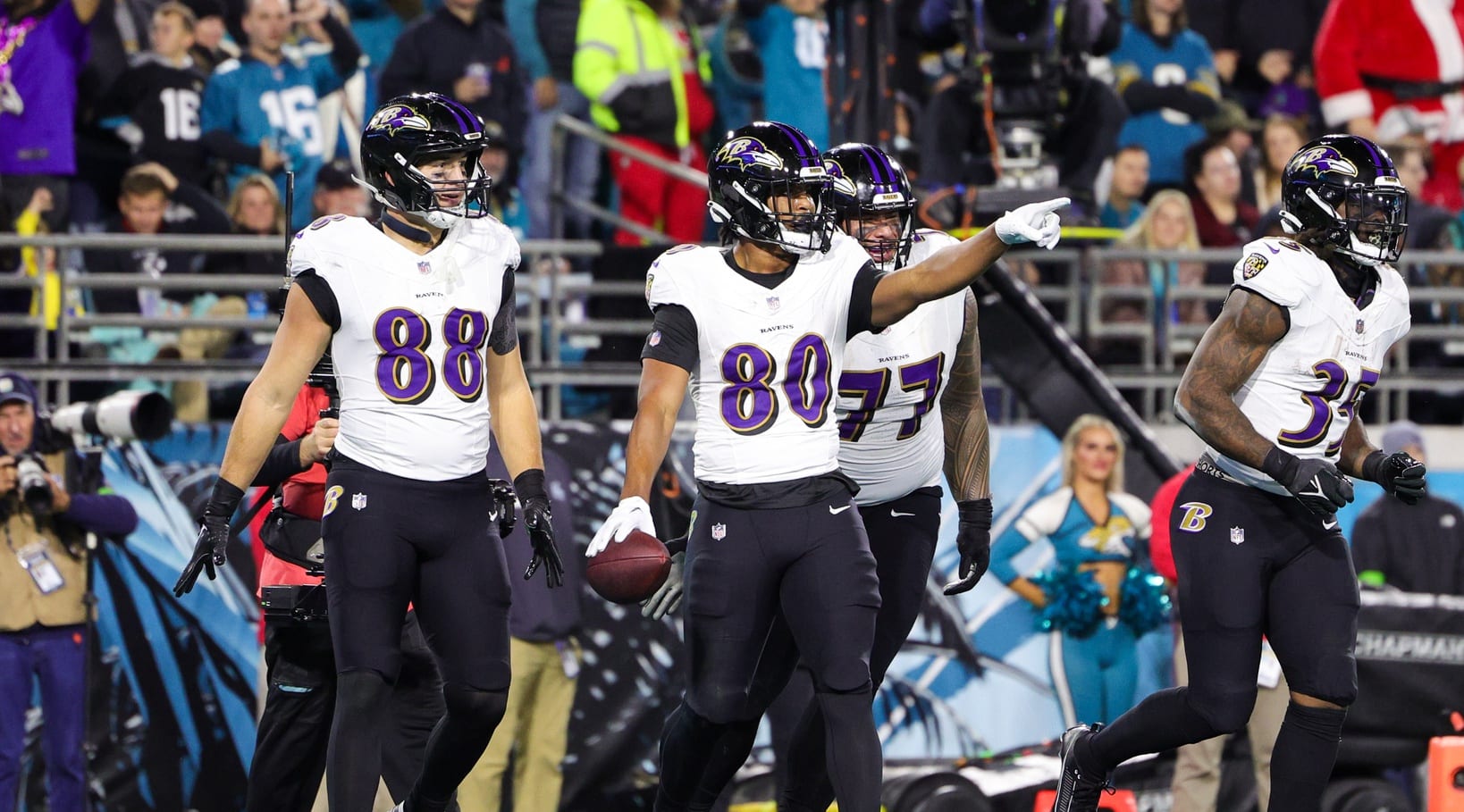If you're migrating to NFL DFS for the first time this season but have already dabbled in a little daily fantasy baseball, you might be familiar with the term stacking. In DFS MLB, stacking refers to taking multiple players—usually at least 3-4—from the same lineup when you feel they have a pitching matchup worth exploiting.
There's stacking in NFL DFS as well, but the scope and scale of it is typically reduced. In daily fantasy football, a simple two-player pairing of a quarterback and one of his receivers or a tight end is what commonly passes for stacking. With only so many offensive plays and possessions in an NFL game, you want to try to navigate toward the likeliest sources of the majority of scoring on a certain team, in an effort at optimizing the potential return from your lineup.
Double the Points, Double the Fun
The motivation for tabbing a quarterback and at least one of his pass-catchers is simple: fantasy points. Stacking a quarterback with a receiver or tight end naturally gives you the opportunity for a bigger scoring haul whenever the former completes a pass to the latter. In cases where the two connect for a touchdown, you're talking about a 10-point swing in your favor, at a minimum, on FanDuel and DraftKings, without even factoring in the corresponding points for passing/receiving yards and the reception (if you are playing on DraftKings). Particularly in tournaments, this can result in a considerable jump up the leaderboard, especially if you happened to select a rather low-owned duo.
Using Vegas Projected Totals for Stacking Decisions
When seeking out a QB/WR, QB/TE, or even a QB/WR/TE combination to stack, a great starting point can be the projected Vegas point total for each game. In the NFL, these totals tend to be very predictive of a team's actual offensive performance. Naturally, you'll want to look for potential stacks on teams that have a solid projected scoring total (ideally at least 21 points), so as to reap the rewards of a multi-touchdown effort from your quarterback and one of his receivers.
For situations when you're looking for some differentiation in a tournament lineup, stacking a quarterback and both a wide receiver and tight end on a prolific offense can do the trick. This is a strategy that is best deployed in games when the team has an elevated projected scoring total and/or is expected to be in a shootout that will potentially require the passing game to remain in attack mode through all four quarters.
Honing in on Targets
Looking at a team's target distribution on offense can also be particularly helpful when honing in on which receiver might be best to handcuff with a quarterback. While some teams will spread the wealth around fairly evenly, a much more common model is one where a clear-cut No.1 wideout—think Julio Jones, Antonio Brown or DeAndre Hopkins, for example—hauls in a lion's share of targets, especially in the red zone. These types of situations are particularly prudent to capitalize on in all contest types, but with the caveat that stacks consisting of quarterbacks and prolific No. 1 wideouts are naturally going to be highly owned week-to-week.
There are also certainly occasions, albeit rare, when it's a tight end that is the most frequent source of a quarterback's attention. One such example from the 2015 campaign that may prove surprising is that of the Titans' Delanie Walker, who received a whopping 133 looks from Marcus Mariota and Zach Mettenberger, ranking him as the 15th-most targeted player in the NFL and far and away the most heavily targeted at the tight end position. As with receivers, pairing a quarterback with his security blanket is often a reasoned choice and can be amply rewarding.
The Role of Matchups and Defense vs. Position
As with virtually other team sport, we can, and certainly should, take an extended look at matchups when making our daily fantasy football stacking decisions. Unlike DFS MLB or even NBA—where individual matchups can often be exploited and are an integral component of daily research—DFS NFL is largely a different animal in this regard.
For example, while one can sometimes focus on an expected one-on-one battle between a certain weak corner and a receiver, finding exploitable passing game matchups in NFL DFS is often more about a general defensive scheme's inability to consistently defend a certain position.
That's not to say that favorable matchups for an offense at a certain position aren't sometimes largely be prompted by substandard individual players on the defensive unit. However, there are other occasions when, say, a Cover-2 scheme may be the primary culprit for constantly allowing tight ends to run free for big gains down the middle of the field.
Therefore, a review of statistics that specifically illustrate how each offensive position does against a certain defense can often be one of the more illuminating daily fantasy football research tools available, with said data typically found through a number of online sources. Looking at this information and identifying an extended pattern of demonstrated poor play by a team against either wide receivers or tight ends can help you drill down which of a quarterback's pass-catchers to select when making stacking selections.
One other note regarding matchups: sometimes facing an unbalanced defense can be even better for an air attack than going up against an all-around poor unit. After all, a thoroughly sub-standard defense that can't stop the run or pass could well facilitate a blowout that leads to the offense having to take their foot off the gas relatively early in game.
Conversely, when an offense runs into a stalwart run defense that is virtually impenetrable, it's often forced to turn to the passing game with much higher frequency. The natural beneficiary of such a development is the quarterback and his group of receivers (including tight ends), rendering them highly appealing stacks that particular week.
Going Off the Beaten Path
Particularly in tournaments, there is always value in striking a contrarian chord if research points you in that direction. Therefore, there are occasions when stacking a quarterback with a No. 2 receiver may be what sets you apart from the field.
As an example, say you're considering the Giants air attack as a potential target one week this coming season, as they're facing an average defensive unit against the pass and have a solid projected team total of 24 points. You're playing in a large-field tournament and need some differentiation if at all possible to give you a chance to climb that ladder if things fall right.
In such a situation, you could certainly go the conventional route, clicking on Eli Manning's and Odell Beckham, Jr.'s names and moving on. However, dialing up a Manning-Victor Cruz combination—likely to be much lower-owned—while fading Beckham altogether could be the prudent move, especially if the opposing team's No. 2 cornerback represents a fair drop-off from the top cover man on the opposition. Yes, you may rue the decision if Beckham goes off, but you could find yourself far ahead of a large majority of the field if it's Cruz's day to shine and ODB has a quiet four-catch, 60-yard, touchdown-less performance!
Tracking Red Zone Statistics for Stacking Decisions
One final statistical point that can be helpful when making stacking decisions is red-zone performance, both on the team and individual player levels. Rolling out a QB/WR or QB/TE combo on a red-zone-proficient team is certainly a good starting point, and doing some homework on who a quarterback's favorite targets near the goal line are is also highly recommended, particularly as sample size builds over the course of a season.










































